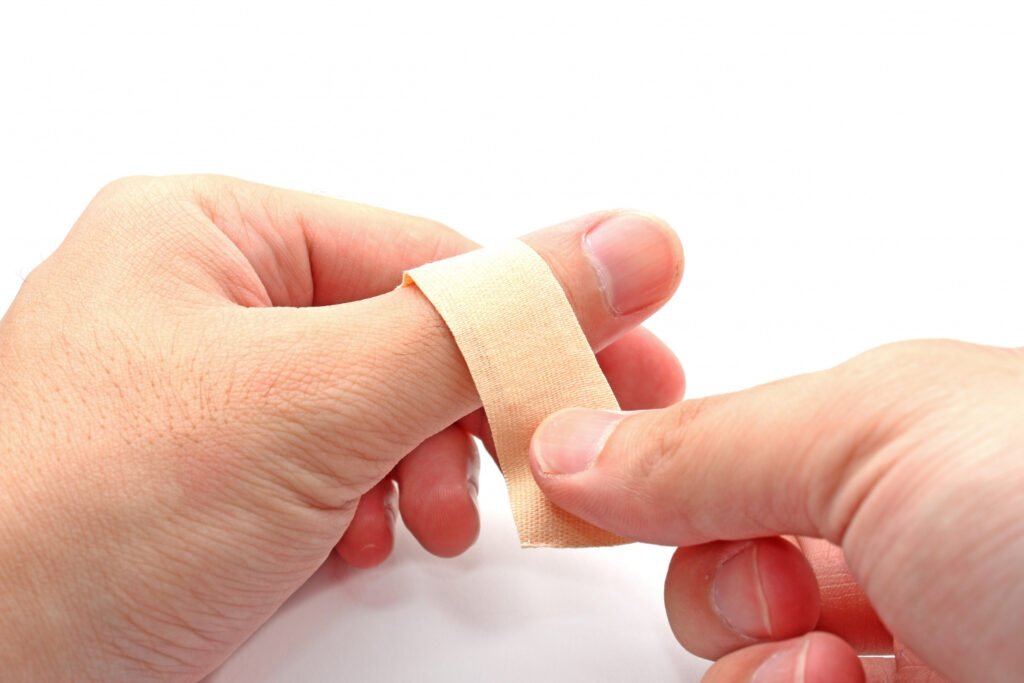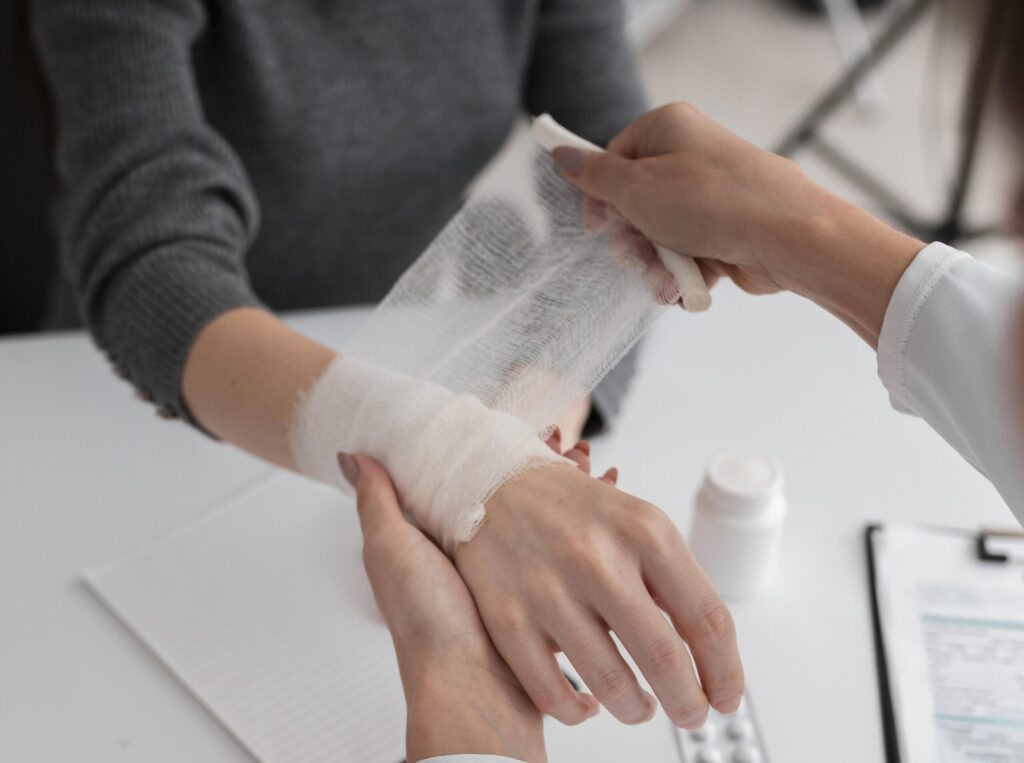Wound care is a critical aspect of healthcare that often gets overlooked yet plays an essential role in the recovery process. Proper dressing selection is a fundamental component of effective wound management. This article delves into the significance of choosing the right dressing for your wound, exploring various types of dressings, factors to consider in their selection, common mistakes, and best practices. By understanding these elements, you can enhance healing outcomes and minimize the risk of complications.
Understanding Wound Care
What is a Wound?
A wound is any injury that disrupts the normal structure of the skin and underlying tissues. Wounds can be acute, resulting from cuts, scrapes, or surgical procedures, or chronic, as seen in conditions like diabetic ulcers or pressure sores. The body’s response to a wound involves a complex healing process that aims to restore integrity and function to the affected area.
Types of Wounds
Wounds can be categorized into several types based on their cause and characteristics. The most common types include:
- Cut wounds: Often caused by sharp objects, resulting in clean edges.
- Scrapes: Superficial injuries where the skin is rubbed or abraded.
- Burns: Injuries resulting from heat, chemicals, or radiation.
- Surgical wounds: Incisions made during surgical procedures.
- Chronic wounds: Long-lasting wounds that do not heal properly, like diabetic ulcers or venous leg ulcers.
Learn more about type of wounds here.
The Healing Process
The wound healing process typically unfolds in four phases: hemostasis, inflammation, proliferation, and remodeling. During hemostasis, blood vessels constrict to reduce blood loss, followed by inflammation, where immune cells help prevent infection. The proliferation phase involves the formation of new tissue, while remodeling strengthens and matures the tissue over time. Understanding this process underscores the importance of appropriate wound care and dressing selection to facilitate healing.

Why Dressing Matters
The Role of Dressings in Wound Healing
Dressings are critical in wound care as they provide a barrier to protect the wound from external contaminants, assist in maintaining a moist environment, and promote optimal healing conditions. Depending on the type of wound, dressings can also help absorb excess exudate, preventing maceration of the surrounding skin. Furthermore, the right dressing can minimize pain and discomfort during the healing process.
Impact on Infection Prevention
Infection is one of the most significant complications that can arise from poorly managed wounds. A suitable dressing acts as a shield against pathogens, reducing the risk of infection. For instance, antimicrobial dressings can actively combat bacteria within the wound bed, promoting a healthier healing environment. Understanding the potential for infection and how dressings can mitigate this risk is essential for anyone involved in wound care.
Comfort and Pain Management
Wound dressings also play a vital role in patient comfort. A well-chosen dressing minimizes friction and irritation, ensuring that the patient can move without discomfort. This is particularly important for chronic wounds, which may require frequent dressing changes. The psychological aspect of comfort should not be underestimated; managing pain effectively can significantly enhance a patient’s overall recovery experience.
Types of Wound Dressings
Hydrocolloid Dressings
Hydrocolloid dressings are made from hydrophilic substances and create a gel-like environment when they come into contact with wound exudate. They are ideal for managing moderate to high levels of exudate and are particularly effective for pressure ulcers and minor burns. Their moisture-retentive properties promote autolytic debridement, which helps with the removal of necrotic tissue.
Foam Dressings
Foam dressings are designed to absorb exudate while providing cushioning and protection. They are often used for wounds with moderate to heavy exudate levels due to their high absorbency. Additionally, foam dressings can help maintain a moist wound environment, which is crucial for healing. These dressings are also suitable for use on painful wounds since they help alleviate pressure and discomfort.
Film Dressings
Transparent film dressings are thin, flexible, and semi-permeable, allowing for oxygen exchange while protecting the wound from contamination. They are typically used for superficial wounds, abrasions, and post-operative incisions. Their transparency allows for easy monitoring of the healing process without needing to remove the dressing frequently.
Gauze Dressings
Gauze dressings are one of the most commonly used and versatile types of dressings. They can be used for a variety of wound types and serve multiple purposes, such as absorbing exudate, providing a barrier, or packing deep wounds. However, gauze can also adhere to the wound bed, which may complicate dressing changes if not used carefully. It is essential to select the appropriate gauze type based on the wound’s exudate level and healing stage.

Factors to Consider When Choosing a Dressing
Type and Severity of the Wound
When selecting a dressing, it is crucial to assess the wound’s type and severity. Different wounds require different management strategies. For example, a superficial scrape may benefit from a simple adhesive bandage, while a deep surgical wound may require a more advanced dressing like a foam or hydrocolloid dressing. Evaluating the wound’s characteristics helps ensure that the selected dressing meets the healing needs.
Moisture Balance
Maintaining an appropriate moisture balance is vital for effective wound healing. Dressings should either retain moisture if the wound is dry or absorb excess fluid if exudate levels are high. An optimal moisture level reduces the likelihood of tissue necrosis while promoting cellular activity necessary for healing. Understanding how different dressings manage moisture can guide proper selection.
Patient Comfort and Mobility
Comfort and ease of mobility should be prioritized when selecting wound dressings, especially for individuals who require long-term care. Dressings that do not restrict movement or cause discomfort can significantly improve a patient’s willingness to comply with treatment. Considerations like the dressing’s size, weight, and adhesion properties can influence overall patient satisfaction and recovery speed.
Common Mistakes in Wound Dressing
Using the Wrong Type of Dressing
One of the most common mistakes in wound care is selecting an inappropriate dressing type. Each dressing serves a unique purpose, and using the wrong one can lead to delayed healing or even complications like infection. For instance, utilizing a non-absorbent dressing on a heavily exudating wound can exacerbate the condition, while an overly absorbent dressing may lead to desiccation of a dry wound. This underscores the importance of understanding the wound’s needs before making a choice.
Neglecting Regular Changes
Another frequent oversight is failing to change dressings as required. Dressings should be assessed regularly and changed when they become saturated, soiled, or loose. Neglecting to do so can impede the healing process and increase the risk of infection. Establishing a dressing change schedule, based on the specific dressings used and the wound’s condition, can prevent complications and ensure optimal care.
Ignoring Signs of Infection
Recognizing signs of infection is crucial in wound care. Symptoms may include increased redness, warmth, swelling, pus, or a foul odor. Ignoring these signs can lead to severe complications. It is essential for caregivers and patients to be vigilant and seek medical attention if they suspect an infection, as early intervention can significantly impact the treatment outcome.

Best Practices for Wound Dressing
How to Properly Apply a Dressing
Proper dressing application is essential for effective wound care. Before applying a dressing, ensure that the wound is clean and dry. Wash your hands thoroughly and wear gloves to maintain a sterile environment. When applying the dressing, ensure it fully covers the wound while adhering well to the surrounding skin to prevent leakage. Avoid touching the inner part of the dressing and ensure that it remains secure throughout the healing process.
When to Seek Professional Help
Wound care can often be managed at home, but there are times when professional help is necessary. If the wound shows signs of infection, fails to improve after several days, or if the patient has underlying health conditions that complicate healing, it’s crucial to consult a healthcare provider. Additionally, for chronic wounds, regular follow-up with a wound care specialist can provide tailored treatment plans to enhance healing.
Educating Yourself and Others
Education is a vital aspect of effective wound care. Patients, caregivers, and healthcare professionals should be informed about the different types of dressings, their purposes, and when to use them. Workshops, informational pamphlets, and consultations with healthcare providers can empower individuals to manage wounds effectively. Increased knowledge can lead to better wound care practices, resulting in improved healing outcomes and reduced complications.
Conclusion
Summarizing the Importance of Proper Dressing Selection
Choosing the right dressing for a wound is a vital component of effective wound management. It influences healing, infection prevention, and patient comfort. By understanding the various types of dressings and the factors that affect their use, individuals can make informed decisions that enhance recovery outcomes. Missteps in wound care can have significant repercussions, making proper knowledge and practices essential.
Encouraging Awareness and Knowledge in Wound Care
Awareness of the intricacies of wound care not only benefits healthcare providers but also empowers patients and caregivers to take charge of the healing process. By educating yourself and adhering to best practices in wound dressing, you can contribute to better health outcomes and quality of life. As wound care continues to evolve, staying informed will ensure that you are well-prepared to navigate this essential aspect of healthcare.




